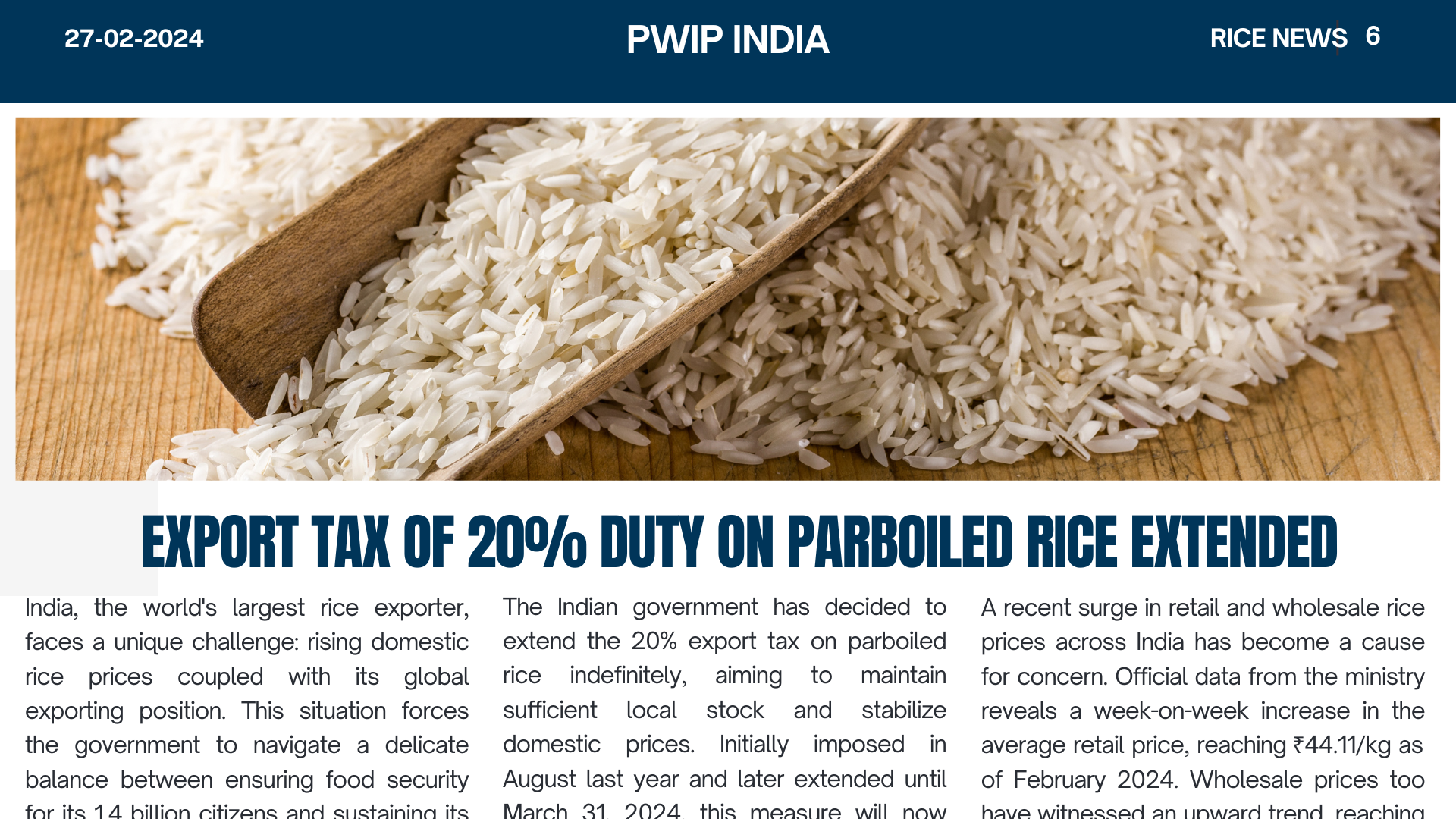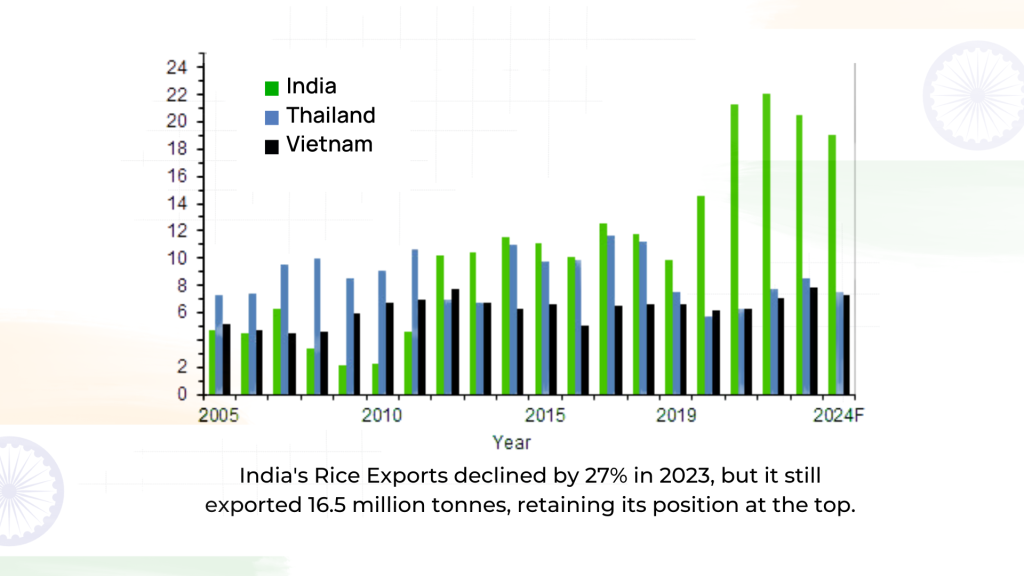
India, the world’s largest rice exporter, faces a unique challenge: rising domestic rice prices coupled with its global exporting position. This situation forces the government to navigate a delicate balance between ensuring food security for its 1.4 billion citizens and sustaining its international rice trade.
The Indian government has decided to extend the 20% export tax on parboiled rice indefinitely, aiming to maintain sufficient local stock and stabilize domestic prices. Initially imposed in August last year and later extended until March 31, 2024, this measure will now continue without a specified end date.
Escalating Rice Prices and Urgent Actions:
A recent surge in retail and wholesale rice prices across India has become a cause for concern. Official data from the ministry reveals a week-on-week increase in the average retail price, reaching ₹44.11/kg as of February 2024. Wholesale prices too have witnessed an upward trend, reaching ₹3,876/quintal. This alarming inflation, standing at 15% year-on-year, necessitates immediate action to mitigate its impact on consumers.
Government Intervention and Strategic Measures:
In response to this pressing issue, the Indian government has implemented a series of strategic measures:
- Extension of Export Tax on Parboiled Rice: Recognizing the potential impact of exports on domestic availability, the government has extended the 20% export tax on parboiled rice without an end date. This move, initially implemented in August 2023 and extended until March 2024, aims to discourage excessive exports and ensure sufficient domestic stock of 135.54 million tonnes (2022-23 crop year).
- Duty-Free Import of Yellow Peas: To further bolster the availability of pulse alternatives, the government has extended the duty-free import of yellow peas until April 30, 2024. This step aims to provide consumers with alternative protein sources of 58 lakh tonnes (between April 2023 and January 2024) and potentially ease pressure on the rice market.
- Subsidized Sales and Market Intervention: Recognizing the immediate plight of consumers, the government conducts weekly auctions of rice from its Central Pool stocks at a subsidized rate of ₹290/10 kg bag. This intervention helps bridge the gap for low-income households and stabilize market prices.

Understanding Production Fluctuations and Monsoonal Impacts:
While India witnessed a slight increase in overall rice production during the 2022-23 crop year compared to the previous year, it’s important to delve deeper. The kharif paddy (monsoon season) harvest in 2023 suffered due to deficient monsoon rains, leading to a 3.8% lower production compared to 2022 (106.31 million tonnes vs. 110.51 million tonnes). This fluctuation in production, coupled with rising global food prices, contributes to the upward pressure on domestic rice prices.
The Balancing Act – Curbing Exports While Maintaining Global Standing:
India initiated curbs on rice exports in September 2022, starting with a ban on broken rice and imposing a duty on white rice shipments. This strategy continued through June 2023 with a complete ban on white rice exports and the introduction of a 20% duty on parboiled rice. Despite these measures, India remarkably remained the top rice exporter in 2023, with 16.5 million tonnes shipped out of the country, including 4 million tonnes of basmati rice. This highlights the intricate balance India needs to maintain – ensuring domestic food security while upholding its position as a global rice supplier, exporting 8.34 million tonnes of non-basmati rice (April – December 2023).

Sustaining Stability and Embracing Proactive Measures:
The Indian government’s efforts to stabilize the rice market reflect its dedication to safeguarding its citizens’ well-being. While the recent measures offer immediate relief, continued vigilance, and proactive approaches are crucial. This includes monitoring weather patterns and their potential impact on production, diversifying rice varieties, and investing in agricultural infrastructure to bolster long-term resilience. By remaining proactive and adaptable, India can navigate its current challenges and ensure a sustainable rice market for future generations.
Watch out whats happening more in Rice Export Industry : Vietnam Imports Brown Rice from India to Meet Global Demand in 2024
